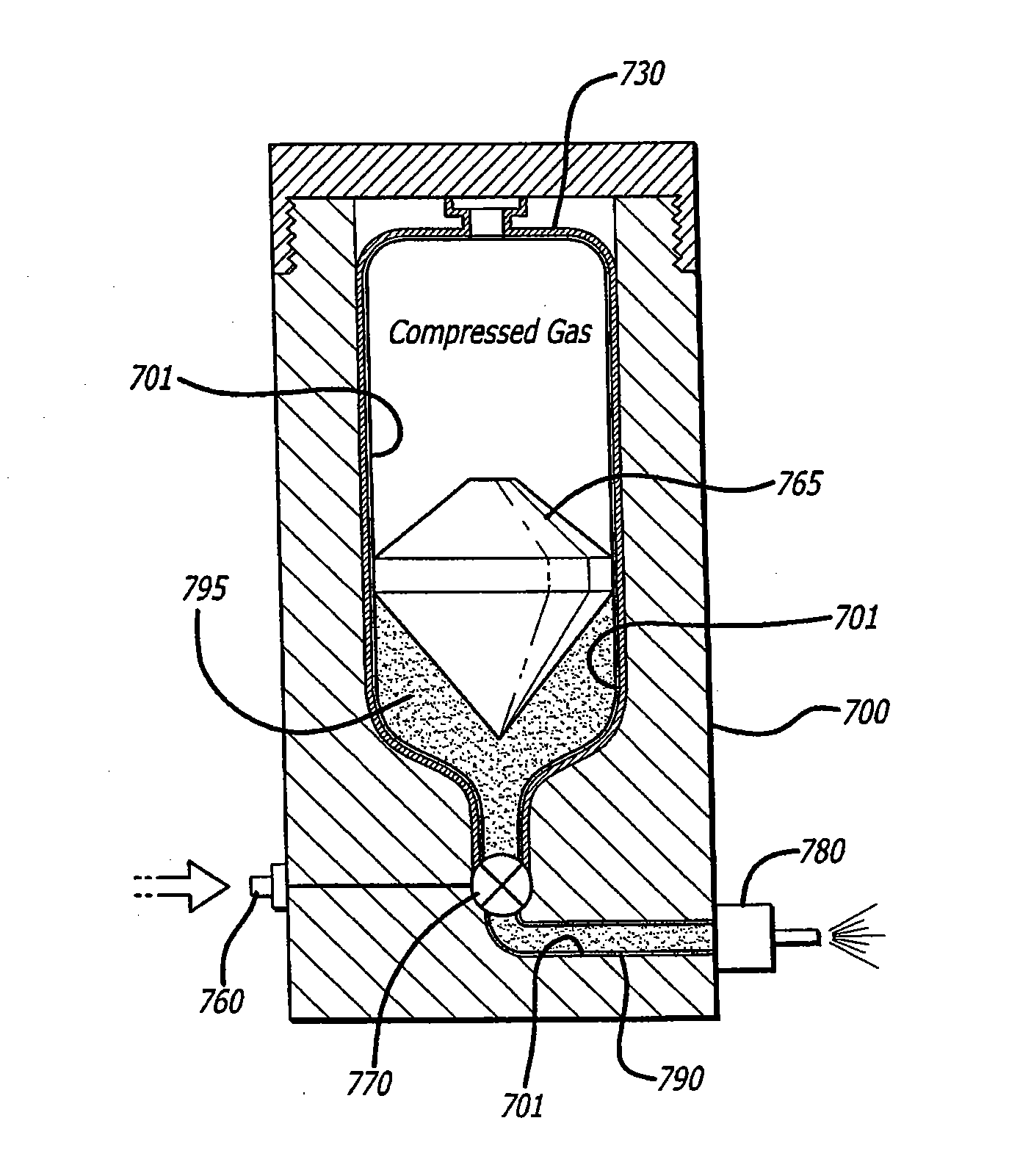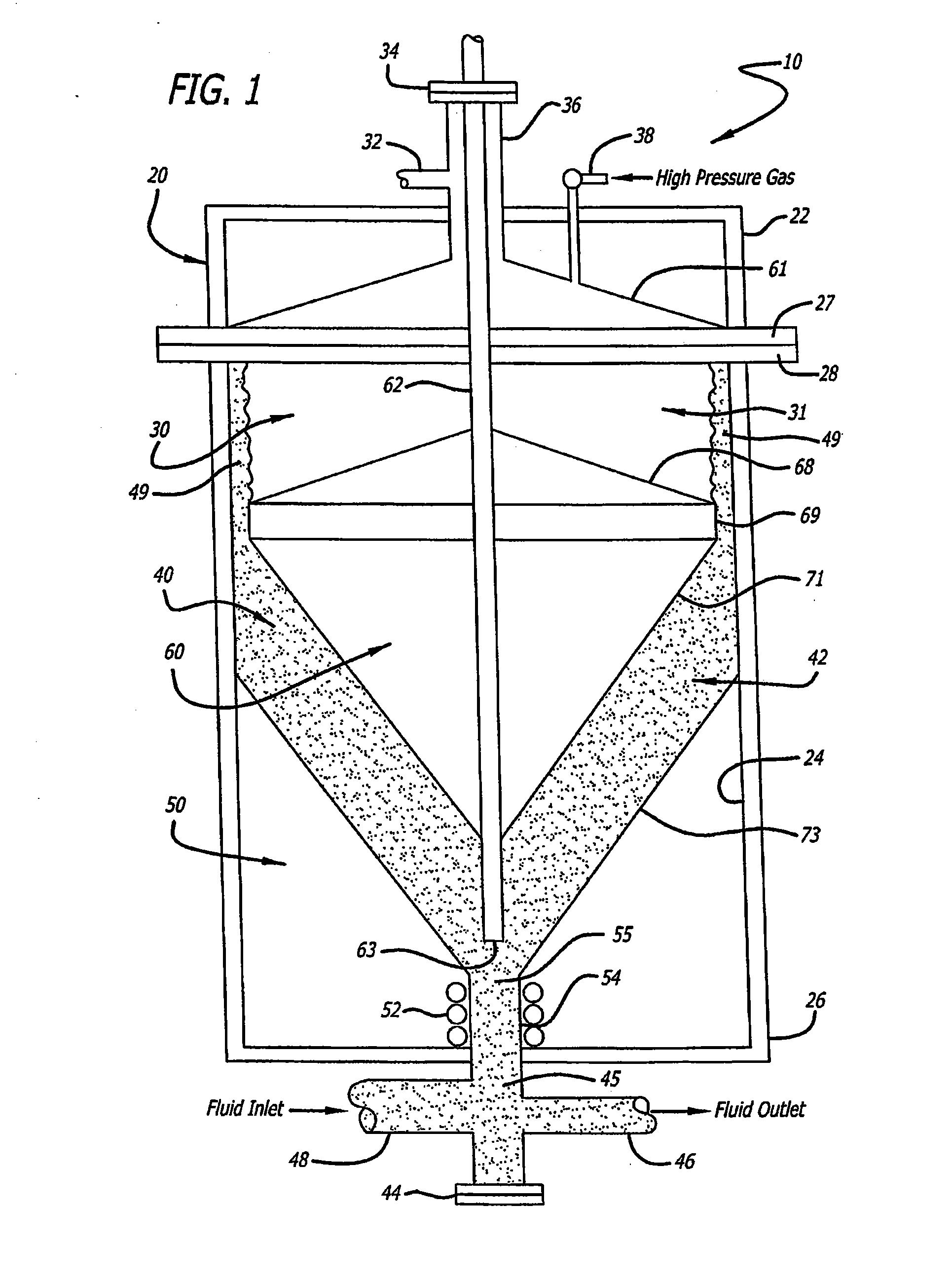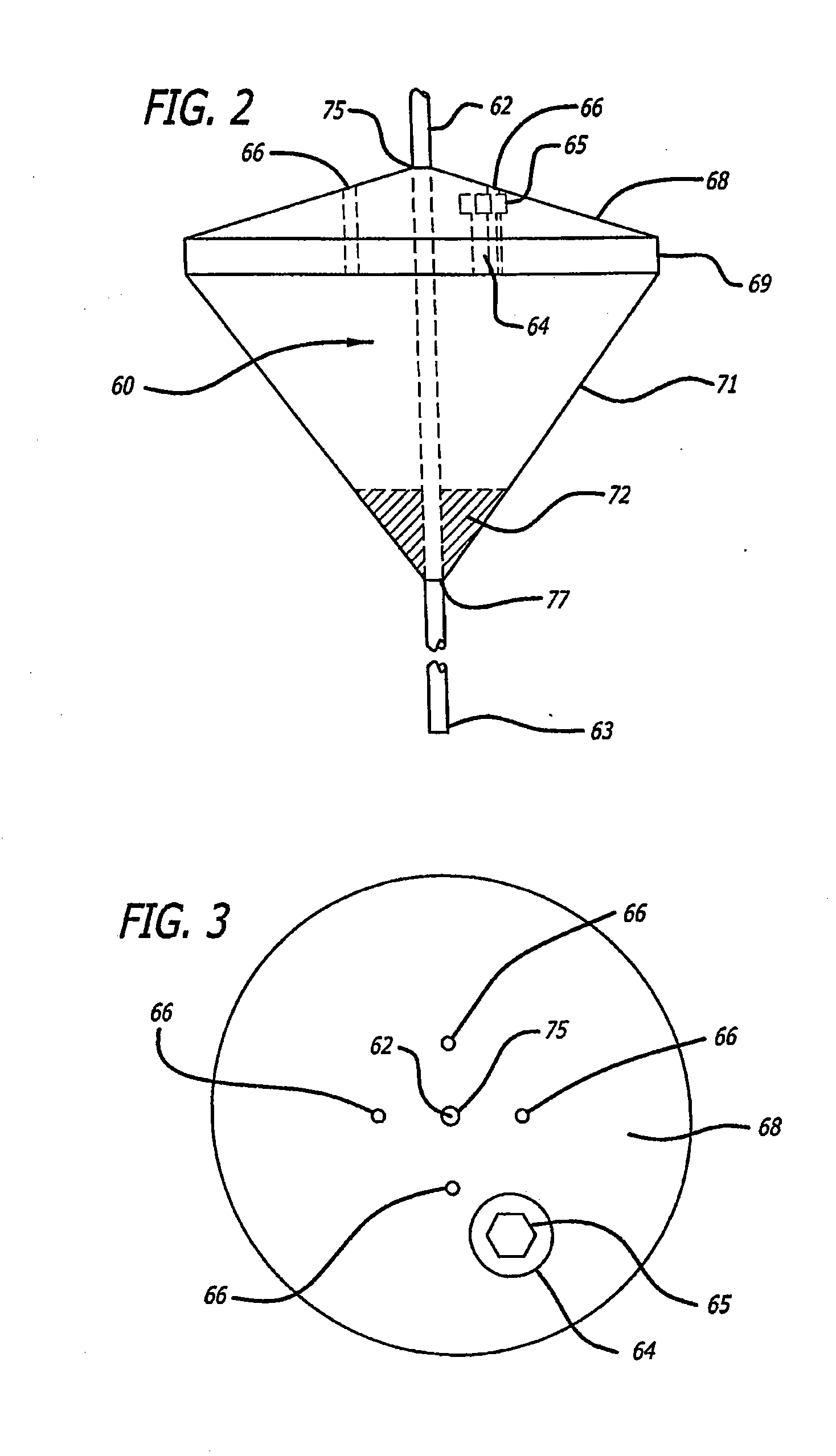Aerosol refill cartridge
a technology of aerosol and refill cartridge, which is applied in the direction of liquid transferring devices, instruments, sustainable manufacturing/processing, etc., can solve the problems of difficult to deliver and dispense thick and/or viscous materials, damage to pumping equipment, and prior known material management systems have encountered difficulties in transferring from containment vessels, etc., to achieve the effect of improving the efficiency of fluid transfer operation, improving fluid movement into and out of the system, and saving energy
- Summary
- Abstract
- Description
- Claims
- Application Information
AI Technical Summary
Benefits of technology
Problems solved by technology
Method used
Image
Examples
example no.1
EXAMPLE NO. 1
Automotive Body Sealant Dispenser
[0066]Dispensing volume: 1.9 gallons (432 cubic inches, 7.1 liters)
Container
[0067]Top: flat[0068]Bottom: flat[0069]Inside Diameter: 6.5 inches (16.5 cm)[0070]Inside height: 14.5 inches (36.8 cm)[0071]Flooded volume: 2.1 gallons (481 cubic inches, 7.9 liters)[0072]Material: aluminum
Force Transfer Device
[0073]Top: flat[0074]Bottom: 120 degree cone[0075]Bottom protuberance: none[0076]Tangential diameter: 6.25 inches (15.9 cm)[0077]Tangential height: 1.0 inches (2.5 cm)[0078]Material: aluminum
example no.2
EXAMPLE NO. 2
Automotive Body Sound Deadening Dispenser
[0079]Dispensing volume: 21.7 gallons (5,013 cubic inches, 82.1 liters)
Container
[0080]Top: 2:1 semi-ellipsoidal[0081]Bottom: 2:1 semi-ellipsoidal[0082]Inside Diameter: 15.5 inches (39.4 cm)[0083]Straight shell height: 32.1 inches (81.5 cm)[0084]Flooded volume: 34.3 gallons (7,929 cubic inches, 129.9 liters)[0085]Material: stainless steel
Force Transfer Device
[0086]Top: 2:1 semi-ellipsoidal[0087]Bottom: 2:1 semi-ellipsoidal[0088]Bottom protuberance: diameter of 3.0 inches (7.6 cm) and height of 2.5 inches (6.4 cm)[0089]Tangential diameter: 14.0 inches (35.6 cm)[0090]Tangential height: 5.0 inches (12.7 cm)[0091]Material: stainless steel
[0092]Proximity of the tangential member 69, 95, 230, 232, 234, 236, 330, 332, 334, 346, 348 of the force transfer device 60, 90, 200 and 300 to the sidewall 24 of the material container 20, 120 is dependant, among other things, upon the nature of the material 42. The proximity range from 0.2 to 1.0 i...
PUM
 Login to View More
Login to View More Abstract
Description
Claims
Application Information
 Login to View More
Login to View More - R&D
- Intellectual Property
- Life Sciences
- Materials
- Tech Scout
- Unparalleled Data Quality
- Higher Quality Content
- 60% Fewer Hallucinations
Browse by: Latest US Patents, China's latest patents, Technical Efficacy Thesaurus, Application Domain, Technology Topic, Popular Technical Reports.
© 2025 PatSnap. All rights reserved.Legal|Privacy policy|Modern Slavery Act Transparency Statement|Sitemap|About US| Contact US: help@patsnap.com



